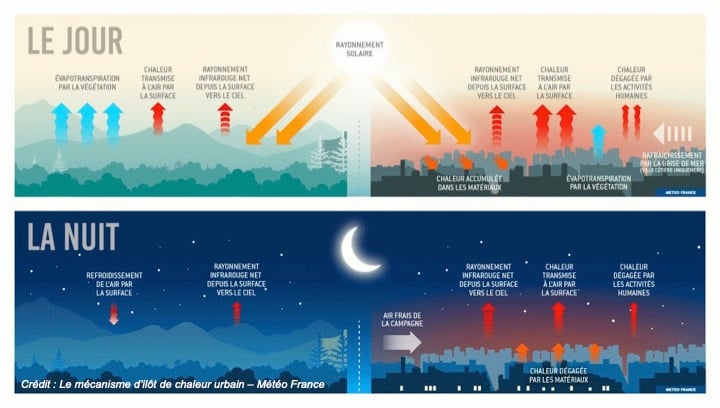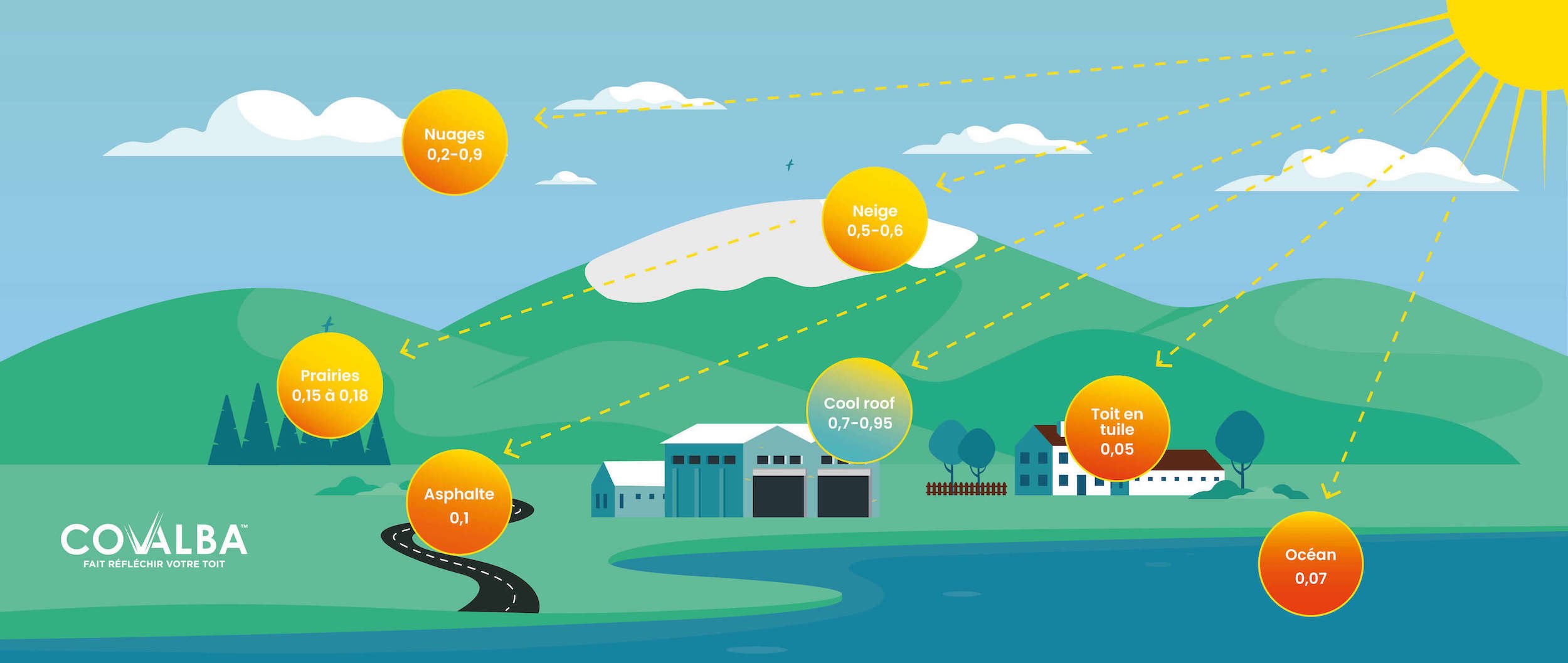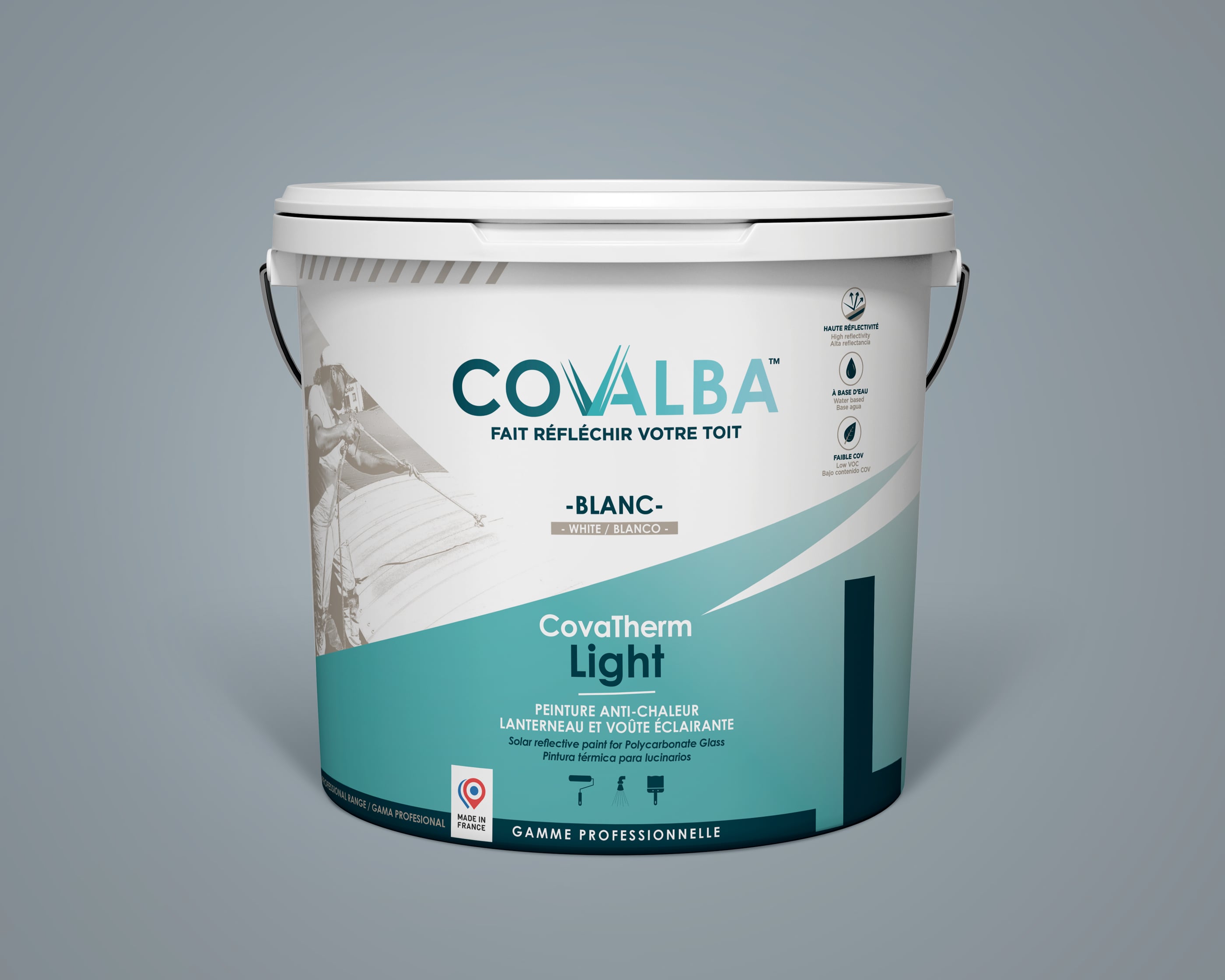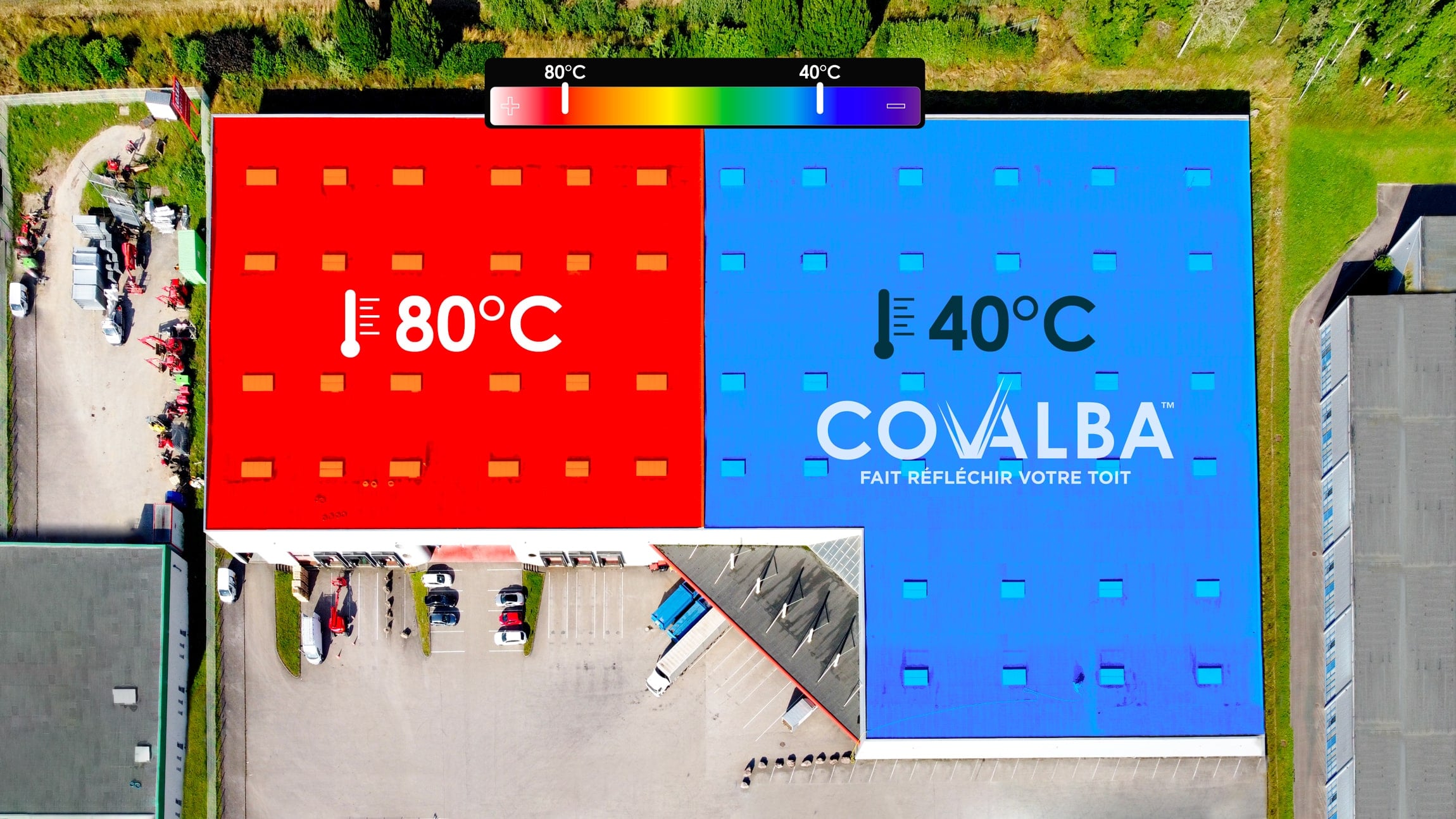It's often said that it's hotter in the city than in the country. It's not just an expression. In fact, in urban centers, temperatures are higher than in rural areas. This is known as the urban heat island effect. This phenomenon is explained by the proximity of buildings, their albedo and the fact that heat cannot escape due to concrete surfaces. With so many surfaces storing heat, cities experience a sharp rise in average temperature on hot days. To limit this heat island effect, the albedo of buildings can be improved by applying white paint to roofs.
What is the heat island effect?
The urban heat island effect (UHI for short) is a climatic phenomenon linked to the growth of cities. We speak of a heat dome surrounding the city, giving it a unique microclimate.

Urban areas as we know them today are predominantly made up of buildings and concreted areas, with less and less vegetation. The accumulation of buildings has several side effects. Firstly, buildings prevent air circulation, making streets stifling. Secondly, the majority of buildings in the city have dark roofs with poor albedo. They therefore store heat and release it at night, contributing to the cyclical microclimate.

The heat island effect is felt both outside, on city streets, and inside buildings. As building materials absorb heat, temperatures rise both inside and outside buildings.
In France, urban heat islands are found in most major cities: Paris, but also Lille, Lyon, Marseille and Aix-en-Provence, despite their proximity to the Mediterranean. Internationally, London and Tokyo are perfect examples of this phenomenon.
💡 Explore all our solutions for limiting heat through roofing
What criteria have an impact on the heat island?
Some conurbations manage to escape this phenomenon or greatly limit its effects. There are several criteria that have a direct impact on the appearance of an urban heat island effect. First and foremost, the presence of vegetation is a determining factor: the more greenery and trees there are in the city, the less the UHI tends to develop.
The choice of construction materials used for buildings and local urban planning is another determining factor. The selection of materials with poor thermal capacity contributes greatly to heat absorption. Road traffic must also be taken into account. Limiting the flow of cars in favor of public transport can reduce ambient heat in the city. Last but not least, a city's energy consumption has an impact on its local climate. Intensive use of heating and air-conditioning leads to over-consumption, which plays a role in the heat island, as warm air is expelled from buildings.
Geographical criteria also play a part in the appearance of a UHI effect. Ground relief, exposure to the sun and the presence of nearby bodies of water are all factors that can help limit the risk of urban heat islands.
How can we reduce the temperature of urban buildings?
While the urban heat island effect now affects many urban areas across the country, the situation is not totally irreversible. In response to global warming and the need to optimize the thermal performance of buildings, new technical solutions have appeared in France in recent years. One such solution is the cool roof, which can have a direct impact on the UHI effect. This solution comes from the United States, where it was first used in Los Angeles, a city that suffers from UHI, with some neighborhoods sometimes exceeding 45 degrees Celsius.
The cool roof is a solution that greatly improves a roof's ability to reject the sun's rays and therefore not absorb heat. A reflective white paint is applied to the entire roof of the building. Thanks to this reflective paint, the impact of the sun's rays is greatly reduced. To be able to act in this way, the paint selected must have a high Solar Reflectance Index (SRI). Covalba distributes its CovaTherm solution in France, an anti-heat paint with the highest SRI in Europe at 119.
This strategy can also be applied at ground level. Some cities have experimented with white paint on roads to enhance solar reflection and reduce the temperature of urban surfaces.
👉 Find out how white paint on the ground affects urban temperature and effectively complements the action of reflective roofs.

Applying a cool roof coating combats the heat island effect in two different ways. Firstly, the surface temperature of the roof is halved, from a maximum of 85 degrees to 45 degrees Celsius. Secondly, the cool roof reduces the temperature inside the building, thus helping to limit the use of air conditioning.

To find out more